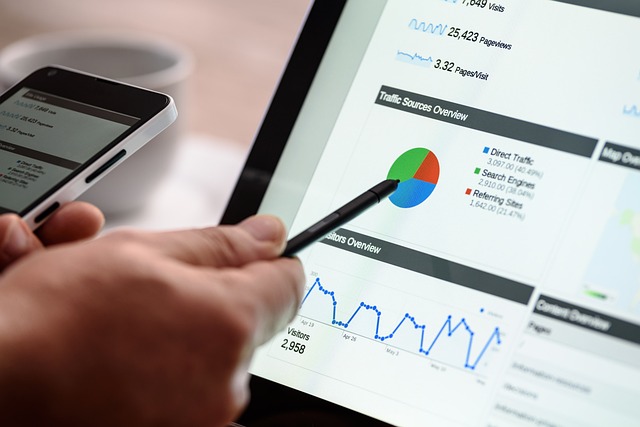Understanding the Purpose of a Financial Dashboard
When entrepreneurs embark on the journey of building their businesses, financial management often surfaces as a crucial element that can determine the success of their efforts. A financial dashboard is more than just a collection of numbers; it’s a visual representation of the health of your business finances. By consolidating key financial metrics and updates into one accessible format, you can gain insight into cash flow trends, profit margins, and expenses. This graphical approach serves as a compass, guiding you through the sea of figures and allowing you to make informed decisions effortlessly.
What makes a financial dashboard particularly valuable is its ability to provide both high-level overviews and detailed insights. You can view metrics like revenue versus expenses at a glance or dive deeper into specific areas, such as operational costs or marketing expenditures. In today’s fast-paced world, having quick and reliable access to this information transforms decision-making from a chore into a streamlined process. Now, let’s dive deeper into the specific components that will make your financial dashboard effective and easy to use.
Essential Components of a Financial Dashboard
Designing a financial dashboard is not an arbitrary process; it involves careful consideration of the components to include. It’s essential to focus on metrics that relate directly to your business’s objectives. For starters, you should prioritize key performance indicators (KPIs) that cover aspects of business finances, such as net profit margin, current ratio, and accounts receivable turnover.
Net profit margin illustrates the percentage of revenue that represents profit after all expenses. This metric helps you gauge overall efficiency while keeping an eye on profitability. The current ratio, on the other hand, measures your ability to meet short-term obligations with short-term assets. A good current ratio indicates financial stability, giving stakeholders confidence in your business’s liquidity. Lastly, accounts receivable turnover showcases how efficiently you collect debts, offering a clear view of cash flow.
Beyond these metrics, you might want to integrate visual elements like graphs and charts. These tools enhance understanding and allow easy identification of trends. Interactive dashboards can further elevate the experience, enabling users to click on elements for more detailed information. A well-structured financial dashboard informs stakeholders and provides insights that facilitate strategic planning, allowing your business to pivot effectively when market conditions change.
Gathering and Integrating Data Sources
The effectiveness of your financial dashboard hinges on the data you utilize. Identifying reliable sources of data is the first step in crafting a comprehensive financial management tool. Consider integrating data from accounting software, banking statements, sales systems, and even marketing platforms to obtain a holistic view of your financial landscape.
When selecting data sources, ensure they align with the KPIs you’ve identified. For example, if cash flow is a critical focus, integrate data from billing systems and payment platforms. Moreover, consider regular updates and real-time data feeds when possible. The accuracy of the information displayed on your financial dashboard relies on timely data integration. Thus, automating data collection minimizes human error and saves valuable time, letting you concentrate on decision-making instead.
After gathering data, the next step involves creating a system for organizing it effectively. This can include categorizing expenses into fixed and variable or segmenting revenue by channels. Proper organization facilitates seamless visualization in your dashboard and allows you to pivot your focus depending on the insights or trends that arise.
Selecting the Right Dashboard Tools
As you work on building your financial dashboard, choosing the right tools becomes a significant decision. Various software options exist, each offering unique features tailored to different business needs. A great starting point is to evaluate options such as Tableau, Microsoft Power BI, or even Google Data Studio.
Your choice should depend on the size and complexity of your business finances. For smaller enterprises, simpler tools might suffice while larger organizations might require more advanced functionalities. Prioritize ease of use when selecting your dashboard software. A user-friendly interface encourages consistent engagement and helps avoid confusion for team members unfamiliar with financial data.
Moreover, integration capabilities are essential. Make sure the software can connect with your existing accounting software or CRM systems. This capability will allow seamless data transfer and enable you to keep your financial dashboard up-to-date without constant manual updates. Finally, consider the cost. While some software solutions come with hefty price tags, plenty of affordable options deliver high functionality, ensuring that you get the most bang for your buck.
Designing Your Dashboard Layout
The layout of your dashboard is critically important. A cluttered dashboard can lead to confusion, while an intuitive design enhances the usability of the financial dashboard. Begin by deciding on the most relevant metrics you want to highlight prominently. Keep the design clean and use ample whitespace to minimize visual clutter. Group related metrics together to create a logical flow of information.
Utilizing visual components like bar graphs, line charts, and pie charts can provide quick visual cues, allowing users to absorb information at a glance. Use color coding to differentiate between various measures, such as revenue, expenses, and profits. This strategy enhances usability and ensures immediate recognition of trends or anomalies in the data.
As you design, consider the audience who will use the financial dashboard. Different stakeholders may focus on varied metrics. Executives might prefer a high-level overview, while the finance team may need detailed breakdowns. Customization options enhance usability. If your dashboard software permits, allow users to create personalized views for a more tailored experience. Remember, a well-designed dashboard not only facilitates data understanding but empowers users to make informed decisions with ease.
Regularly Reviewing and Updating Your Dashboard
Creating a financial dashboard is not a one-time task; it requires ongoing review and updates. As your business evolves, so will your financial needs. Regularly analyzing the relevance of the metrics displayed can help you identify what works best and what may no longer serve your purpose. Establish a routine for assessing your dashboard, whether it’s monthly or quarterly, depending on your business’s pace.
During this review, consider the feedback from users of the financial dashboard. Their insights can shed light on usability issues or additional metrics to consider. Engaging stakeholders leads to a more effective tool tailored to your organization’s specific requirements. You should also stay informed about industry trends; changes in regulations or market conditions may necessitate a shift in focus for your dashboard’s displayed metrics.
Additionally, regular updates ensure that your dashboard reflects the most current data, keeping decision-making relevant and timely. Schedule data extraction from financial systems to align with the frequency of your reviews. Automated reports can help maintain accuracy and reliability. In the ever-changing realm of business finances, a regular review and update cycle will help ensure your financial dashboard remains a valuable asset.
Training Your Team for Effective Use
Even the most robust financial dashboard can fall flat if team members don’t know how to use it effectively. Investing time in training can vastly improve engagement and understanding. Begin by conducting workshops to familiarize your team with the financial metrics and the software used to create the dashboard. Encouraging open dialogue where team members ask questions or discuss challenges they face can enrich the learning experience.
Furthermore, not all team members will possess the same level of financial expertise. Create tailored sessions based on the varying comfort levels in interacting with financial data. There’s no need to scare off less experienced individuals with jargon. Keep your teachings straightforward and relatable to foster a culture of learning. Provide resources they can refer back to later, like documentation, tutorials, or even cheat sheets summarizing essential functions.
Finally, encourage your team to utilize the dashboard regularly. Consistent use builds familiarity and confidence, turning the financial metrics from intimidating numbers into a tool that drives informed decision-making. With the right training and practices in place, your entire team can harness the power of your financial dashboard, enhancing both individual and organizational performance in financial management.
FAQs
1. What is a financial dashboard?
A financial dashboard is a visual tool that consolidates and presents key financial metrics in an easily understandable format. It helps businesses monitor performance, identify trends, and make informed financial decisions.
2. Why do I need a financial dashboard for my business?
A financial dashboard provides a clear overview of your business finances, such as cash flow, profit margins, and expenses. It helps in strategic planning and allows for quicker decision-making based on real-time data.
3. How often should I update my financial dashboard?
It’s advisable to update your financial dashboard regularly—monthly or quarterly is typical. Frequent updates ensure that your data remains relevant and actionable, facilitating timely decision-making.
4. What key metrics should I include in my financial dashboard?
Key metrics often include net profit margin, current ratio, accounts receivable turnover, cash flow, and expenses. Focus on metrics that align with your business objectives for the best insights.
5. Can a financial dashboard integrate with other software?
Yes, many financial dashboards integrate seamlessly with accounting software, banking systems, and CRM tools. This capability allows for automatic data updates, enhancing accuracy and saving time.



